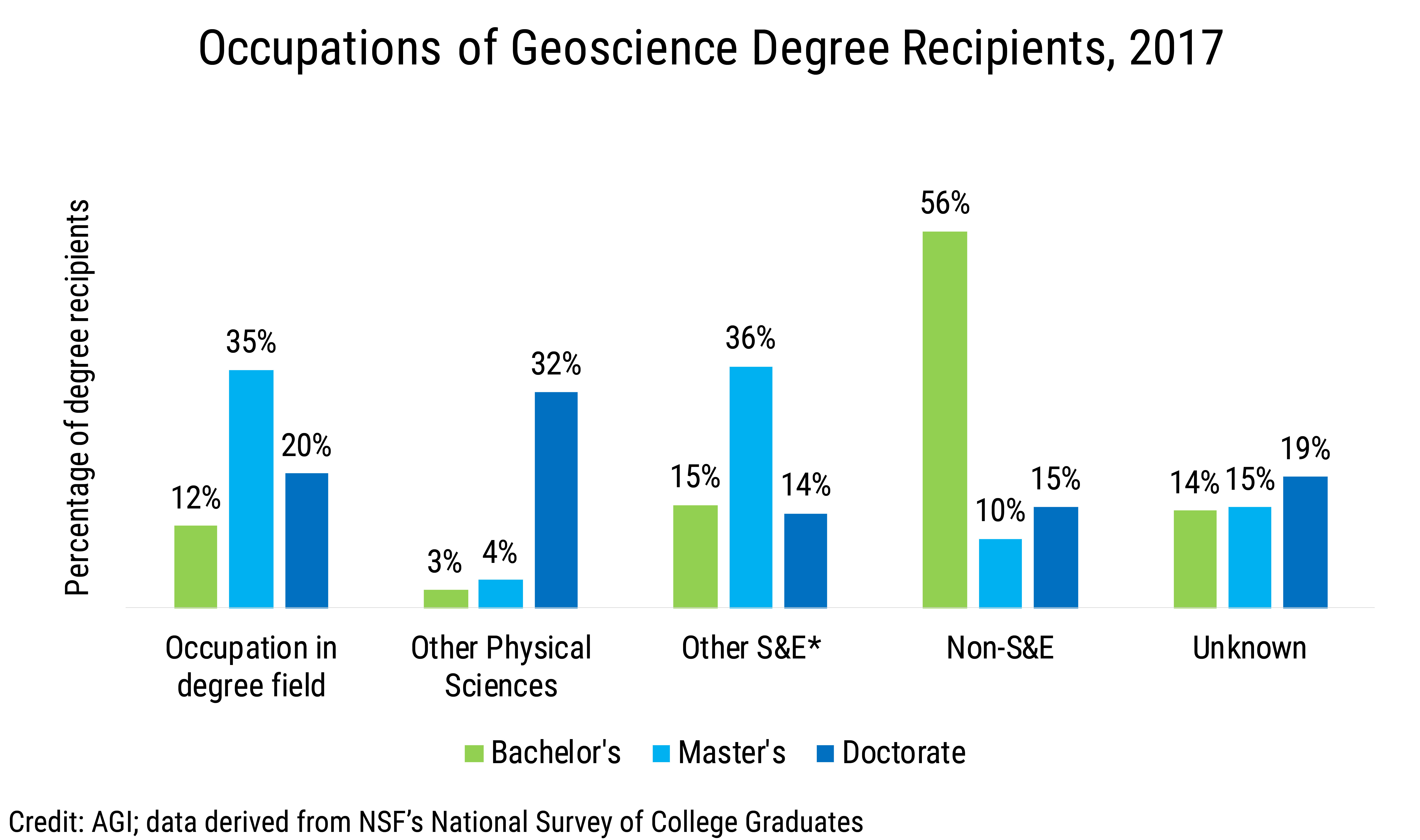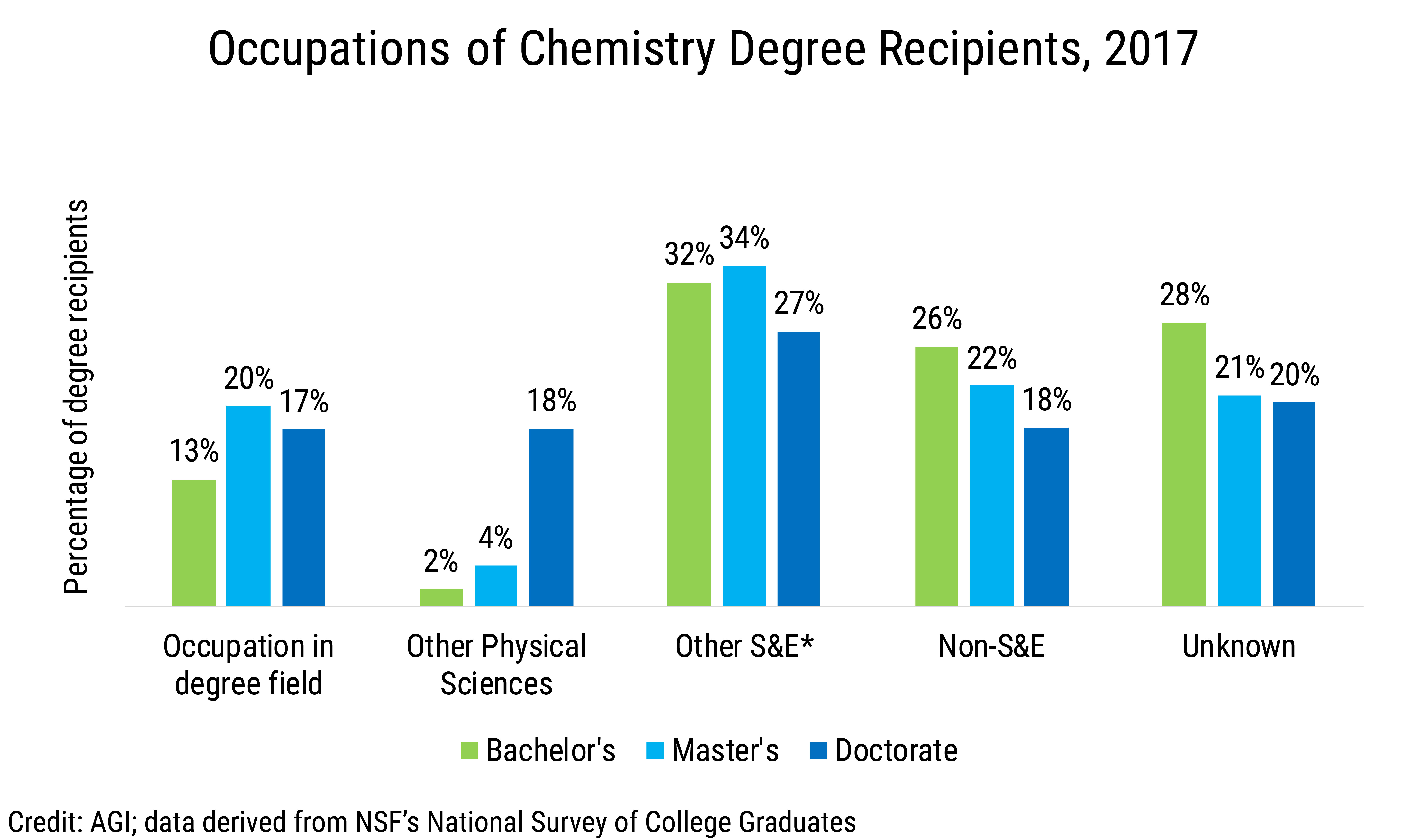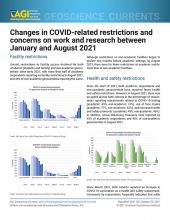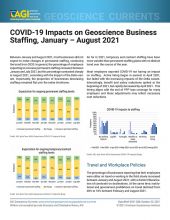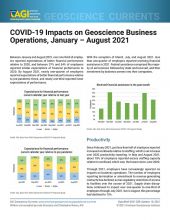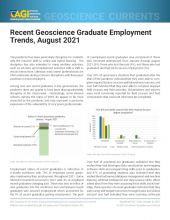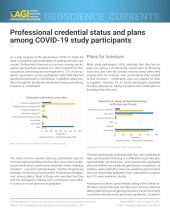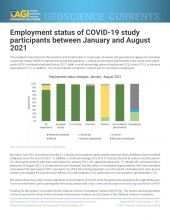Geoscience degree recipients work in many occupations beyond their core field. Data from AGI’s National Geoscience Exit Survey provides some insight into the reasons graduates pursue a degree in the geosciences, including the intellectual engagement and interdisciplinary nature of the discipline, and interest in conducting research outdoors. In 2017, geoscience degree recipients also cited motivations including solving societal issues that intersect the geosciences, career opportunities, support from peers and faculty, and for doctorate recipients, the desire to continue research and field work in the discipline.
According to data from the National Science Foundation’s National Survey of College Graduates about where individuals with specific terminal degrees worked, 19 percent of geoscience degree recipients worked in their core field in 2017, and this percentage varied by degree level (12% of bachelor’s degree recipients, 35% of master’s degree recipients, and 20% of doctorates). The majority of geoscience graduate degree recipients work in science and engineering occupations (75% of geoscience master’s and 66% of geoscience doctorates). In contrast, only 30% of geoscience bachelor’s degree recipients work in science and engineering occupations. The percentage of degree recipients with unknown occupational status represents those either not employed or not seeking employment.
In 2017, 56 percent of geoscience bachelor’s degree recipients were employed in non-science and engineering fields, primarily in management and related occupations (14%), sales and marketing (13%), primary and secondary special education (5%), and other non-science and engineering occupations (19%). Those bachelor’s degree recipients working in other science and engineering occupations were employed primarily as technicians (5%) and computer and information scientists (4%).
Geoscience master’s degree recipients employed in other science and engineering occupations primarily secured employment as pre-college teachers (9%), technicians (8%), managers (6%) engineers (5%) and computer and information scientists (5%). Geoscience doctorates were primarily employed as physical science post-secondary teachers (29%) or within their core field (20%). Those working in other science and engineering occupations primarily worked in related science and engineering fields in health occupations (4%), biological sciences (5%) and computer and mathematical sciences (4%).
The percentage of geoscience bachelor’s degree recipients working in the same field as their degree (12%) is on par with chemistry bachelor’s degree recipients (13%), and higher than physics bachelor’s degree recipients (5%). In terms of graduate degree recipients, more geoscience master’s degree recipients work in the same field as their degree (35%) than do master’s degree recipients in other physical sciences (20% for chemistry and 15% for physics).
The percentage of geoscience doctorates working in the same field as their degree is generally on par with trends in other physical science disciplines. It is important to note however, that post-secondary teaching is classified as its own occupation in the National Survey of College Graduates, and this explains the increase in the percentage of doctorates working within "other physical sciences" as compared to working within the same field as the degree. Geoscience doctorates employed as post-secondary teachers in their core discipline is double that of doctorates in other physical sciences: 27% for geoscience doctorates compared with 14% for chemistry doctorates and 13% for physics doctorates.



